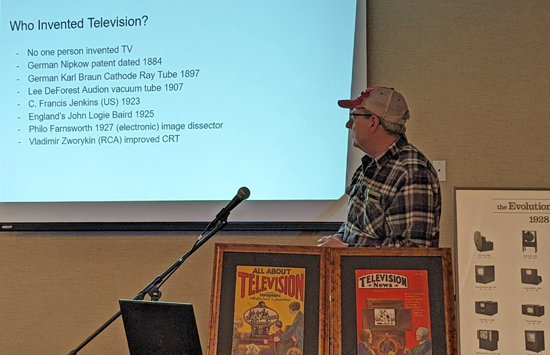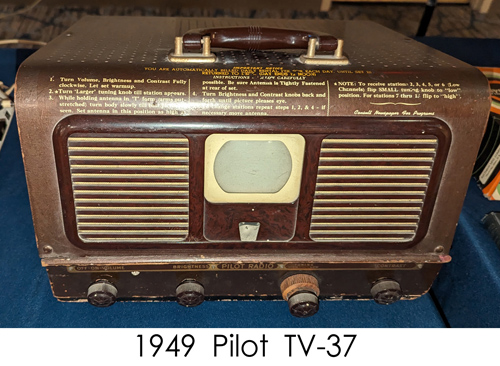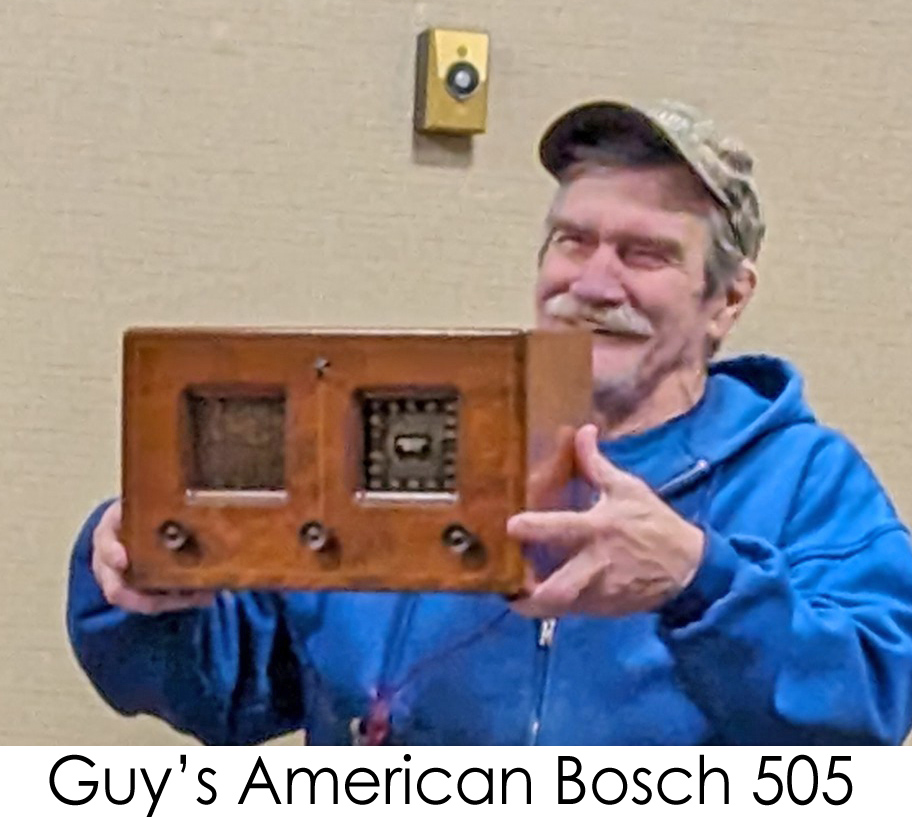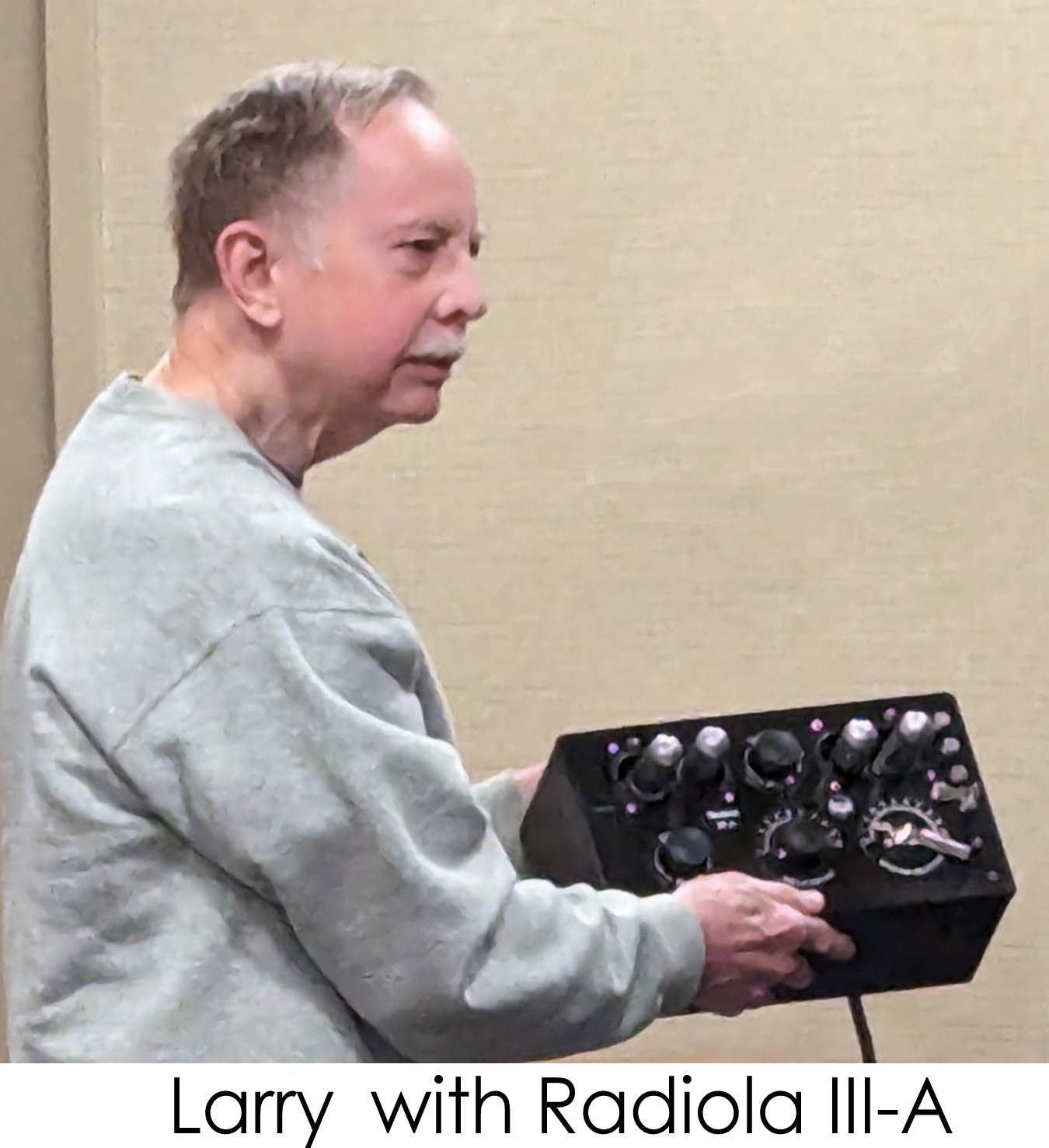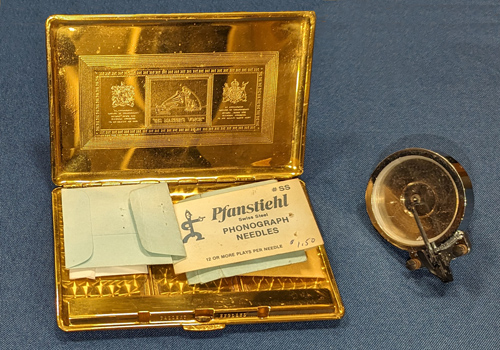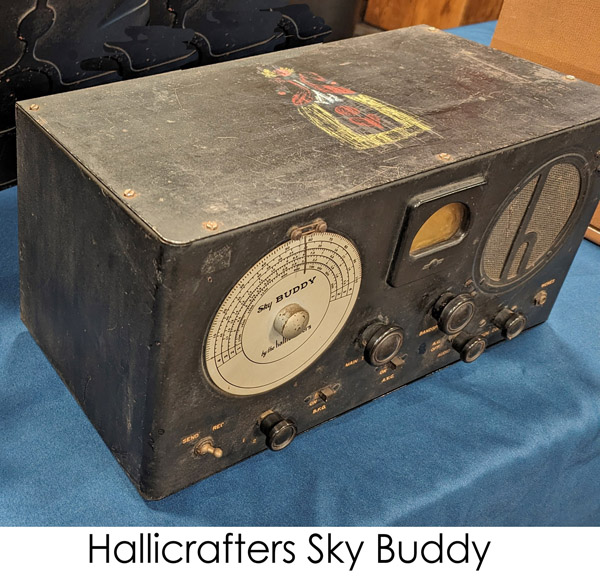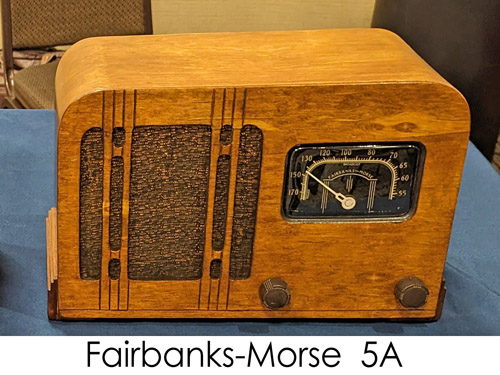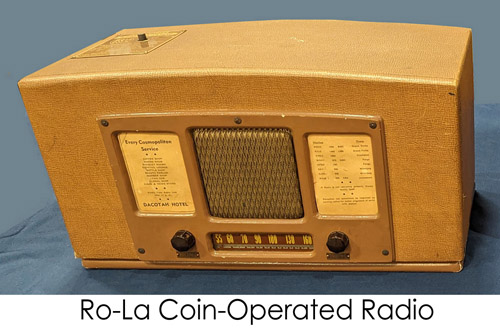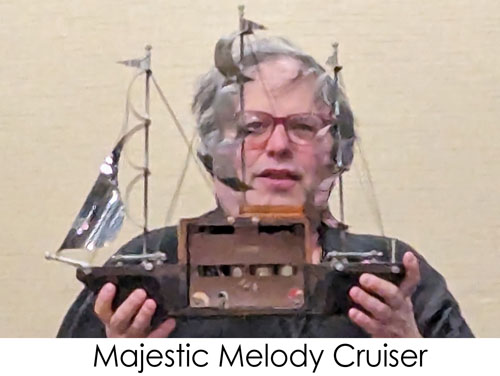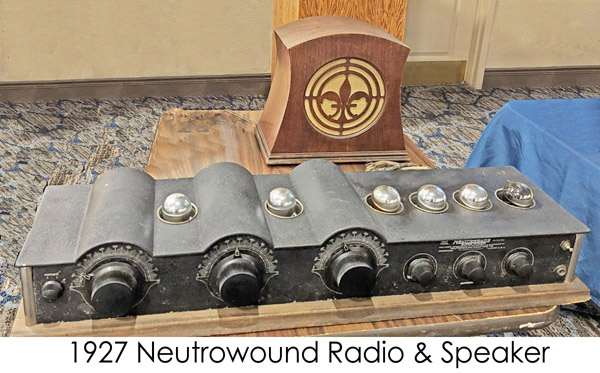| . |
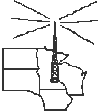 . .
Back To: Calendar of Events |
The Northland Antique Radio ClubSunday February 11, 2024NARC Workshop ReviewThis year's mild winter weather on February 11th helped boost attendance at the outdoor swap meet that precedes NARC's annual workshop each year. One year, many years ago the weather was so cold that there was only one swap meet seller, but this year there was a decent turnout! Some nice things changed hands, including some free items that had been donated to the club. The workshop started at noon in the hotel's main ballroom with around 35 members attending. Bill Fanum had his sound system set up and we also made good use of the club's digital projector. Phillip Drexler announced that there would soon be a final give-away of radios from former NARC member John Staubus' estate (this actually happened February 17-18) and Jim Thompson gave a brief update on the Radio Daze 2024 event coming up. Thanks to Gary Ball who organized the workshop, there was an interesting group of four topics and presenters for this year's workshop. 1. Larry Tell explained how he restored his early 1930s Hickok 510X tube tester, including replacing the bad original analog meter with a new LCD meter of his own design. The restoration began with all new capacitors, many new resistors, and replacing the type 83 and 6H6 tubes with solid state equivalents. He designed the 5-inch LCD meter to fit within the original black meter case and to display a moving 'needle' on the LED screen, similar to the original meter. This was quite an involved process! He used Quadcept to create a schematic diagram of the LCD meter circuitry that he designed, used Altium to design the printed circuit board, had JLCPBC make the circuit board and mount some of the high density surface mount parts, and then Larry soldered the remaining parts onto the board. When completed, the tube tester operates as it should, but the meter is more accurate, is easier to read, is not affected by electrostatic charges, and has no failure-prone bearings as compared to the original meter. 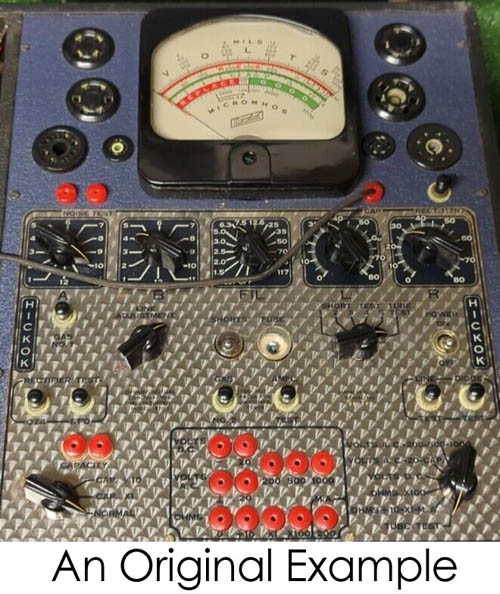 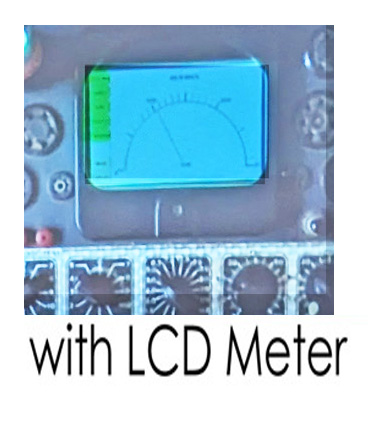 2. Jim Reynolds enjoys listening to Internet radio where he can hear stations from all over the world. He talked about various radios that can receive Internet Radio directly, and about apps that can receive Internet Radio on cell phones. Some apps are totally free while others require a subscription. He mentioned that Simple Radio, TuneIn, Jango, Receiver, and Pandora are just a few of the apps that can be installed on a cell phone to receive thousands of internet radio stations from all over the world. [Ed. Note: If you haven't tried Internet radio, you're missing out! I use Radio Garden on my phone.] 3. Matt Hyman demonstrated how to repair a stripped wood screw hole by putting Elmer's Wood Glue on the screw threads, then screw it in, let it dry to the wood, and then you can unscrew the screw and screw it back in. The glue has filled the voids so the screw can be screwed in tight again. 4. Don Hauff presented the history of televisions, broken down into the mechanical, pre-war, post-war to 1950, early color sets, 1950's, 1960's, and 1970's eras of television, and mentioning many significant inventors and television improvements through the years. It was a well-organized presentation with slides showing many different vintage televisions, and he wrapped it up with a very humorous video showing a film that was made in 1931 that showed how scanning disc television works. An interesting bit of history for those of us in the Twin Cities is that the first television broadcasting station in Minneapolis was W9XAT [X=eXperimental] which operated a 500 watt mechanical scanning-disc broadcast system for a few years beginning in 1933. It was owned by Dr. George Young who also owned radio station WDGY [W Dr. George Young]. Don recommended these two websites to anyone interested in vintage televisions:
Show & TellA number of attendees brought radios to show. Guy started things off by showing his United American Bosch Magneto Company's model 505 radio that was made in 1935. So far he has only performed a preliminary test, bringing it up slowly with a Variac to prove the transformer is good, and now he plans to do a complete restoration. Another collector had a nice 1962 ten transistor Realistic radio from Radio Shack that cost him a dollar at one of NARC's fall swap meets at St. Croix Lutheran HS some years ago. It is all original except he changed the 9-volt battery connector to the new standard style. Larry explained how he restored an RCA Radiola III-A 1924 regenerative set from basket-case condition into a great looking and working set using solid-state tubes that he designed. This included replating metal parts, filling the panel lettering with white paint, replacing the battery cable, and replacing the unique capacitors that are in this set. Tom found a few things at an antique shop, including an RCA cigarette case, some phonograph needle packets, a phonograph reproducer, and record box with records in it, all possibly from former NARC member Jerry Madson's estate. Another collector brought a battery powered Motorola radio telephone that he found at one of the Staubus sales and someone identified it as a post-World War II model. William bought a Hallicrafters Sky Buddy at the Staubus sale and after cleaning it up replaced the speaker and some capacitors so it works well now. Another collector had a nice 1962 ten transistor Realistic radio from Radio Shack that cost him a dollar at one of NARC's fall swap meets at St. Croix Lutheran HS some years ago. It is all original except he changed the 9-volt battery connector to the new standard style. Another collector also got some radios at the Staubus sale, including this nice looking 1937 Fairbanks-Morse model 5A radio that he refinished and made a new plastic dial cover for. Don showed a Geiger counter that he recently found at a sale along with a tube tester and other test equipment. Bill was at a Staubus sale and picked up a 1940's coin-operated Ro-La Coin hotel radio that was made in Minneapolis by Robert Lawrence [Ro-La] Electronics Corporation. So far, he's found a key to open the back cover but hasn't worked on the electronics yet. The instructions on the front indicate it is from the Dacotah Hotel, mostly likely the one in Grand Forks, North Dakota.
Pat showed the 1927 Neutrowound battery set that he had purchased at a Staubus sale, along with the correct Neutrowound speaker that he found elsewhere. He also had bought a couple Hammarlund sets at the same sale and told us how he later picked up a Model 53 Teletype machine there for someone on a ham radio forum who was looking for one. It was gratifying to hear about all the items that came from John Staubus' estate sale, and how members of the club are enjoying them!
Thanks to everyone who helped with this event! Copyright 2025. All rights reserved. The Northland Antique Radio Club |
